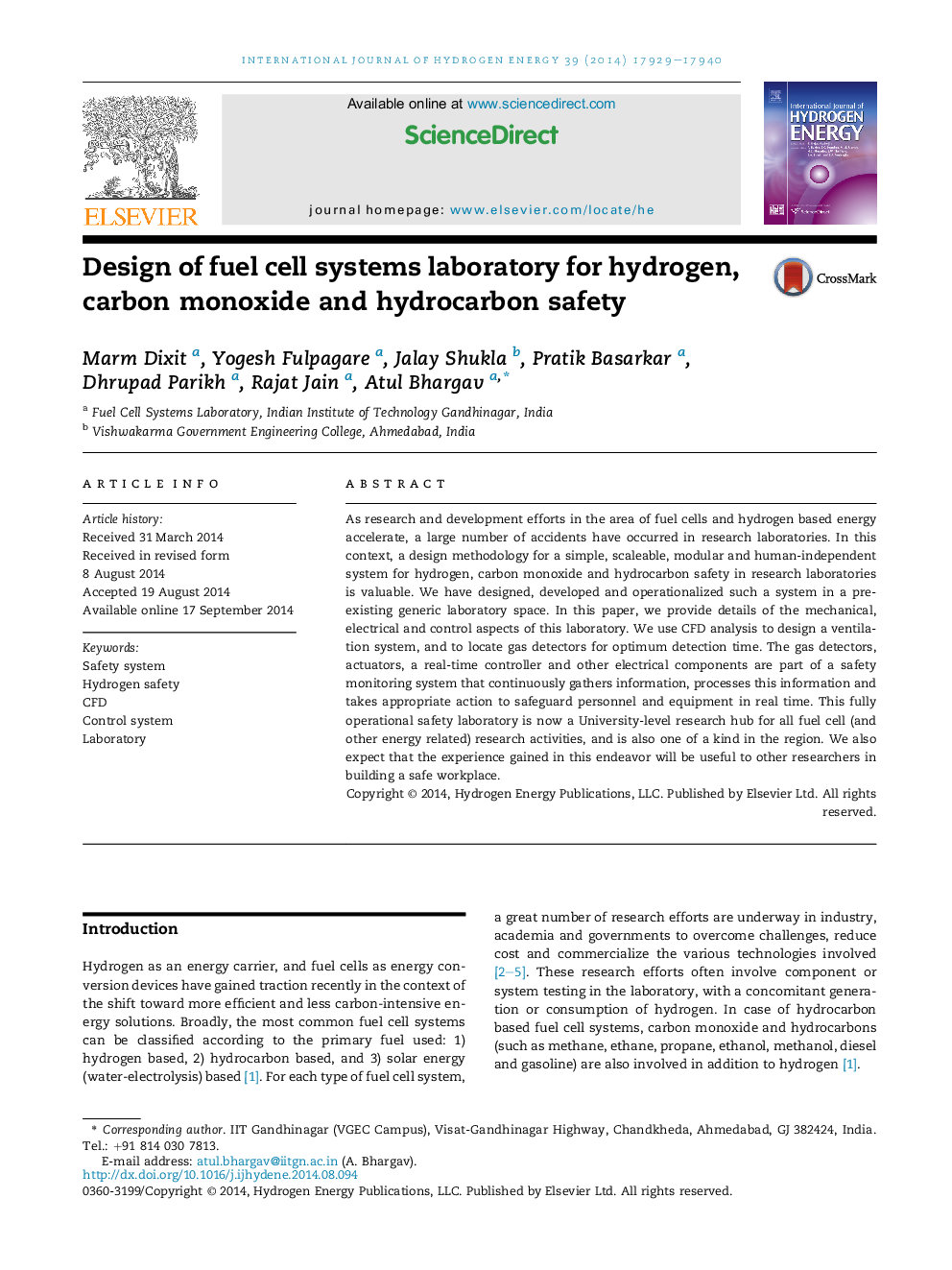| Article ID | Journal | Published Year | Pages | File Type |
|---|---|---|---|---|
| 1271890 | International Journal of Hydrogen Energy | 2014 | 12 Pages |
•Structured methodology used for fuel cell lab safety design and implementation.•CFD analyses aided in ventilation system design and gas sensor placement.•Human-independent control system implemented for reliability.•Implemented design is modular and scalable.
As research and development efforts in the area of fuel cells and hydrogen based energy accelerate, a large number of accidents have occurred in research laboratories. In this context, a design methodology for a simple, scaleable, modular and human-independent system for hydrogen, carbon monoxide and hydrocarbon safety in research laboratories is valuable. We have designed, developed and operationalized such a system in a pre-existing generic laboratory space. In this paper, we provide details of the mechanical, electrical and control aspects of this laboratory. We use CFD analysis to design a ventilation system, and to locate gas detectors for optimum detection time. The gas detectors, actuators, a real-time controller and other electrical components are part of a safety monitoring system that continuously gathers information, processes this information and takes appropriate action to safeguard personnel and equipment in real time. This fully operational safety laboratory is now a University-level research hub for all fuel cell (and other energy related) research activities, and is also one of a kind in the region. We also expect that the experience gained in this endeavor will be useful to other researchers in building a safe workplace.
